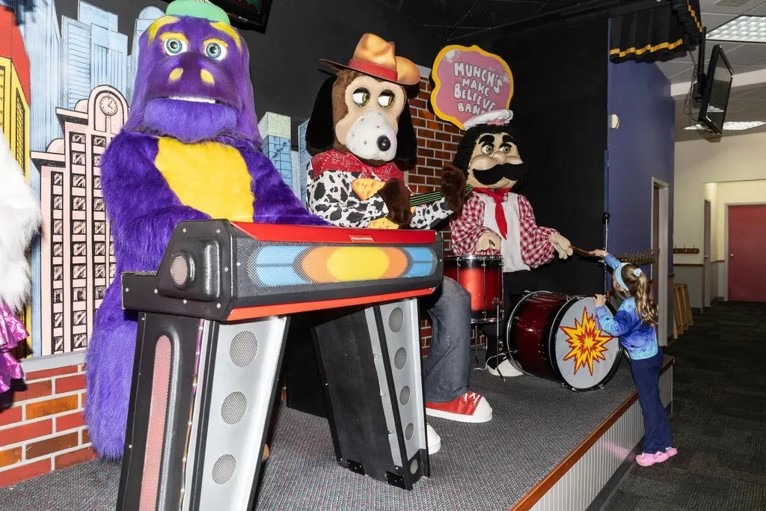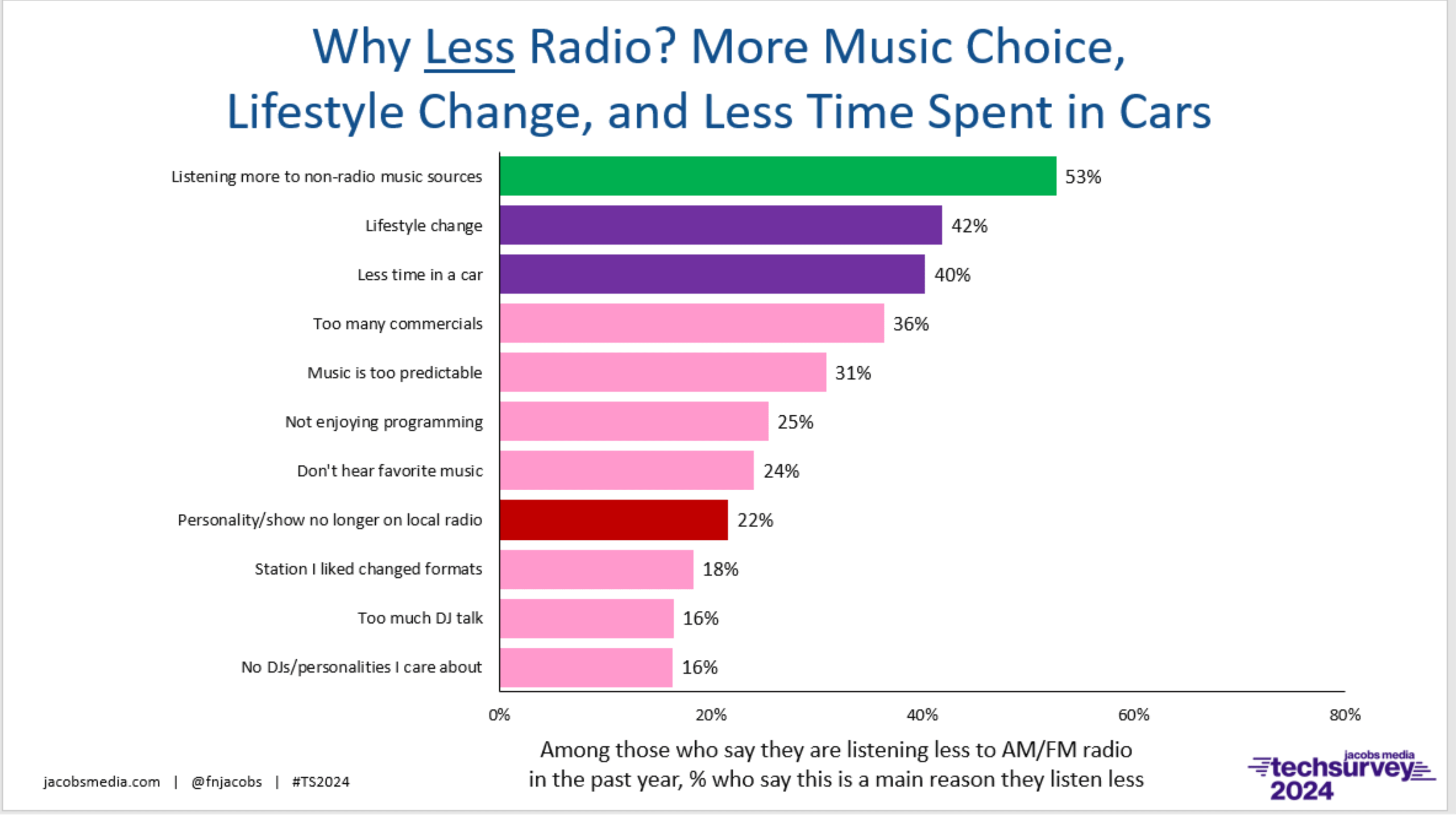
Munch’s Make Believe Band via Twitter/X
There’s a lot going on in this world of ours. Two brutal wars showing no signs of ending, severe and unpredictable weather, and rising temperatures in the political climate as America cascades toward for what promises to be another cataclysmic, unpopular election that promises to cause reverberations long past November.
In the midst of all this turmoil, emotion, and strife comes the story of a protest on the retail front. No, it’s not about wages, unionization, or about Work From Home. Regulars citizens have banded together to save a bunch of bots.
In a true “man bites dog” story, the announcement from the Chuck E. Cheese company that it has decided to RIF its animatronic band had its customers up in arms about this newest affront to the consuming public. Apparently, the musical robots weren’t even offered buyout packages.
Talk about a reversal of fortune. As the New York Times dutifully reported the other day, fans of the kids’ emporium united to protest the firing of these robotic musicians at 400 of their locations in the U.S. by the end of the year. As I write this, there was no immediate reaction from Wall Street about Chuck E. Cheese’s plans to phase out their legions of aging robots.
Fans of the arcade chain were up in arms, and some cleverly acquired the mobile phone number of C.E.C. CEO David McKillips and gave him a piece of their minds over this obviously shortsighted decision to “ban the bots” from their themed arcade/pizzerias.
These bands, which perform under the name of Munch’s Make Believe Band, have been around for decades. Personally, I always found the band creepy and derivative, but I am not a target customer of Chuck E. Cheese. It will be interesting to watch Billboard this week to see if any of M2B2 tunes are charting. I’m told Luminate will also be tracking streams for the animatronic band, which may finally be inducted in Cleveland’s hallowed Rock Hall of Fame. And wouldn’t it be just like SNL to make Munch and mates this weekend’s musical entertainment?
Chuck E. Cheese is breaking up its beloved, horrifying animatronic band https://t.co/bINMH6LsVb pic.twitter.com/lcjuemz4EI
— SPIN (@SPIN) August 17, 2017
When Chuck E. Cheese CMO Mark Kupferman announced three of these long in the tooth bot bands will be saved, the C.E.C. faithful applauded. (Later, two more received their stay of execution, bringing the total to five stores where the band will play on.)
As Kupferman admitted, “It’s a duty to our legacy,” adding “I don’t think there is anybody at Chuck E. Cheese who begrudges doing this.”
Well, I should hope not.
There’s clearly a nostalgic backlash happening here, as the Times notes the five surviving bands are from the 1980s, 1990s, and 2000s. (Sounds like Chuck E. Cheese may have a new slogan!)
But it also confirms that entertainment outlets that mess around with the fan formula only have themselves to blame when customers get wind of their cost-cutting measures – especially those of the public facing variety.
 Chuck E. Cheese could probably have reduced the number of pepperonis on their pizzas, raised the Play Pass price a buck or two, or added different colored balls in their ball pits without raising the hackles of their end users.
Chuck E. Cheese could probably have reduced the number of pepperonis on their pizzas, raised the Play Pass price a buck or two, or added different colored balls in their ball pits without raising the hackles of their end users.
But messing with the personalities that fans of all ages have come to enjoy is a decision that has both economic and emotional implications. A brand may find itself on shaky ground when it shuffles familiar, iconic elements.
This is why all those RIFs radio broadcasters have put in place over the past few years – and especially in recent weeks and months – are often confounding. Expense slashing is never easy to institute, especially when they involve human beings who hold jobs, some of whom are long-time employees who have performed well.
“Spreadsheet cuts” based on just the numbers are the least sensible way to slash expenses because they rarely take into account the intangible value someone or something brings to the operation. Radio, fans and advertisers – two key constituencies – are going to instantly realize one of their favorites has been pink-slipped or benched.
someone or something brings to the operation. Radio, fans and advertisers – two key constituencies – are going to instantly realize one of their favorites has been pink-slipped or benched.
We can thank social media – the same platforms that allow stations to freely commune with their loyal listeners – for disseminating info about changes to a station’s on-air roster. Sadly, the news of a dear departed DJ only confirms existing perceptions that radio is in dire straits and/or severely out of touch with its core audience.
To test the theory, I went right to the biggest radio fans I know – the 31,400+ respondents in Techsurvey 2024. Among the 11% who say they’re listening to less broadcast radio year over year, the top reasons are logical: more digital choices for music, lifestyle changes, and less time spent in cars.
But a look further down this list of grievances includes, “A personality or show I enjoyed listening to is no longer on local radio.” It is selected by more than one-fifth (22%) of these disaffected radio customers.

A deeper dive into the data reveals these pissed off listeners have a greater tendency to be male, older, and partisans of Sports Radio stations. You won’t be surprised to learn they are quite a bit more likely to be the “detractors” in our Net Promoter Score question. After all, why recommend a radio station to a friend or co-worker when they just parted ways with a favorite DJ, show, or host?
Far from suggesting there’s an “art” to instituting budget cuts, there is something to be said for going beyond a number on an Excel spreadsheet to make those painful calls. On the programming side, music tests present a great analogy. It is far easiest – and allegedly more “scientific” – to set a bar at a point on the like-dislike spectrum (almost always arbitrary), and retaining/adding every song above that line, while dropping/rejecting songs below it. This is what I consider a “blind sort” and it’s been happening for years at stations where songs are literally treated like a bunch of decimal points and digits rather than the pieces of art they truly are.
But a thoughtful look at the titles that stay or go is often not only important, but revelatory. A secondary song by a one-hit wonder may make the cut, while a classic that’s been played on the station for years may find itself on the chopping block – often by a miniscule margin.
find itself on the chopping block – often by a miniscule margin.
Smart, savvy PDs who act with their audience in mind have to step in and make an executive decision in these cases. There may be economic or numerical benefits to making a cut, but when it impacts key customers at various points in the funnel, there could be a much higher price to pay.
The Chuck E. Cheese executive team just learned that lesson. Walking back the decision to terminate Munch’s Make Believe Band maybe wasn’t an easy one, but it was the right one. (Of course, audience research among C.E.C. fans of all ages might have avoided this embarrassment altogether.)
At a time when many of us are worried about bots taking jobs from humans, the Chuck E. Cheese incident reminds us of the power of nostalgia and tradition, perhaps even more important in our hyper-fast world. It also reinforces that change comes in many different forms – especially those behind-the-scene moves customers are unlikely to notice versus the ones that trigger emotion, loyalty, and the motivation to show up in the first place.
Changes that impact the entertainment experience enjoyed by millions have to be carefully considered by corporate teams, too often led by a zealous CFO’s red highlighter rather than by a sensitive leader looking out for a brand’s biggest fans. When the core audience gets cheesed off, there can be hell to pay.
In this cluttered media world in which we live and work, radio broadcasters could learn a lot from a bunch of dated animatronic bots.
Originally published by Jacobs Media








